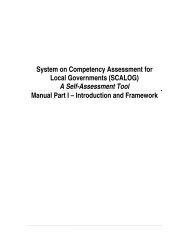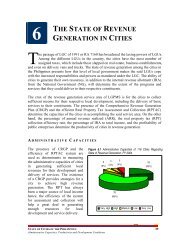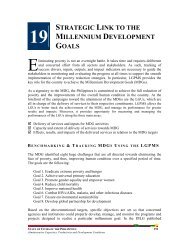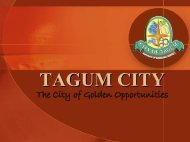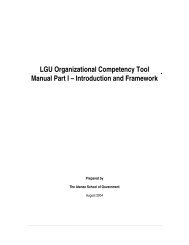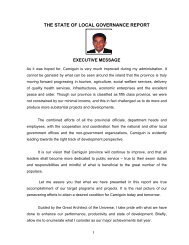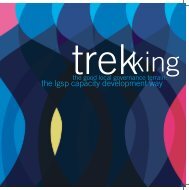PED guidebook main sxn rev6. FINAL.pdf - LGRC DILG 10
PED guidebook main sxn rev6. FINAL.pdf - LGRC DILG 10
PED guidebook main sxn rev6. FINAL.pdf - LGRC DILG 10
Create successful ePaper yourself
Turn your PDF publications into a flip-book with our unique Google optimized e-Paper software.
Project Evaluation and Development1. Undertaking <strong>PED</strong> will, by themselves, entail the use of time and manpower resources.Thus, it is not advisable to subject each and every project to rigorous <strong>PED</strong>. By this, wemean that for “small” projects, the steps to be undertaken can end with “UNDERSTANDthe project”, but for “big” projects, there should be a complete analysis.2. The question that comes to mind is “How do we define big and small projects?” Thisquestion should be answered in relation to the competing needs for the fiscal resourcesof the province. A suggestion is to subject projects to the complete <strong>PED</strong> if the projectcost meets the following:Pr oject cos t>20%development fundnumber of municipalitiesThe above scheme is easily justified:2.1 If we consider one municipality to be just as important as the next, and2.2 If the project will require resources greater than the amount computed at equalsharing, then2.3 We will need to be able to defend the project to the other municipality that will haveto forgo some of its share from the “fiscal pie”.Annex 1 shows the latest IRA data (2003) of provincial LGUs and the corresponding cutoffbetween small and big projects. It is suggested that the cutoff be re-computed asnew data becomes available.3. All projects that are proposed for external funding will be subjected to thorough <strong>PED</strong>analysis, regardless of the size of the project. The reason for this is because the fundingsource will want to be assured that the funds (whether in the form of loan or aid) will, onbalance, benefit society. Note that your proposed project will have to compete againstproposed projects of other provinces and even agencies of the national government!F. PROCEDURES IN CONDUCTING <strong>PED</strong>1. KNOW THE PROJECT1.1 Before proceeding, it is important to identify the good or service that the project willprovide. Having done this, you will need to characterize this output as to:1.1.1 Whether the good is private, public or mixed. Be guided by the following setof questions: 5a. If I consume the good, does it mean that others cannot consume it?b. Can I limit consumption only to those who paid for the good?c. Is the project’s output divisible and can consumption be measured?d. Is it feasible to collect fees from the consumers?5 Please refer to the Technical Appendix, pages 2-4 for a more detailed discussion of the typology of goods andservices.RGEdillon January 200616




